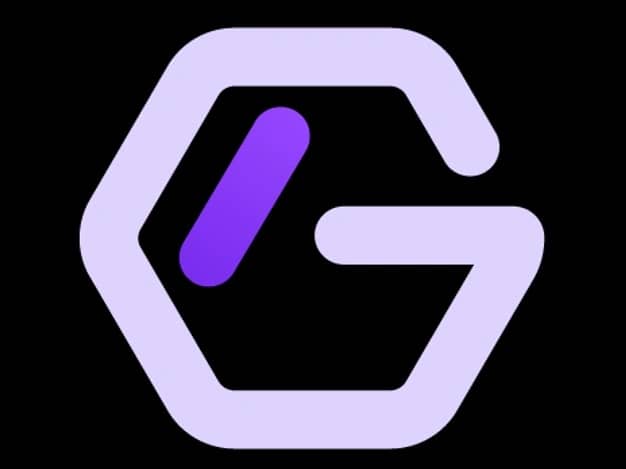订阅 wiki
Share wiki
Bookmark
GraphLinq
GraphLinq
GraphLinq Chain 是一个 layer-1 区块链 生态系统和开发平台,它支持自动化、无需代码即可创建 去中心化应用程序 (dApps) 和区块链流程。GraphLinq 生态系统于 2021 年推出,还使用其区块链网络和引擎来运行其设计协议。 [1][2][13]
概述
GraphLinq 生态系统由两个主要组件组成:
GraphLinq Chain
一个 Proof-of-Authority (PoA) 区块链,旨在支持 GraphLinq 协议,并为运行自动化提供安全、可扩展的平台。 [2]
GraphLinq Hub
GraphLinq Hub 于 2024 年 2 月推出,为经验丰富的交易者和新手提供功能,使他们的体验无缝且更有价值。功能包括:提供流动性并获得 LP 交易费用、交换 ERC20/GraphLinq 链代币、通过 farming 池赚取收益、质押 GLQ 并获得奖励、验证器页面等。 [10][11]
GraphLinq 协议
一种自动化流程管理解决方案,允许用户部署和管理各种类型的自动化,而无需编码技能。该协议包含四个关键要素:
- GraphLinq IDE(集成开发环境):一个可视化的拖放界面,用于创建自动化。
- GraphLinq App:一个用户友好的平台,用于访问和部署预制的自动化模板。
- GraphLinq Engine:在 GraphLinq Chain 上执行自动化的核心组件。
- GraphLinq Marketplace:一个用于购买、销售和交易自动化模板的平台。[2]
融资与合作
DWF Labs
2024 年 3 月,GraphLinq 获得了新一代 Web3 投资者和做市商 DWF Labs 的战略投资。 [8]
这次合作标志着一个激动人心的伙伴关系的开始,这是我们通过值得炒作的、易于访问的技术来促进 DeFi 采用的关键时刻。 - 公告帖子中指出[8]
通过这次合作,DWF Labs 将作为 GraphLinq 在各种 CEXs 和 DEXs 上的主要 流动性提供商,并为 OTC 交易提供支持。 [8]
这种支持旨在提高 GLQ 代币的流动性,优化其在全球市场上的无缝供应,并为市场参与者带来切实的利益。[8]
2024 年 5 月,GraphLinq 还与加密数据领域的动态参与者 Mobula 合作,作为其开发更互联和可访问的区块链生态系统的持续使命的一部分。 [9]
将 Mobula 的 API 整合到 GraphLinq 中是 GLQ Chain 的一个重大进步。此举将帮助分析师和企业释放 GLQ 链上数据的全部潜力。 - 博客文章说[9]
OpenAI
2023 年 3 月,GraphLinq 将 OpenAI API 集成到其 IDE 中,允许用户将 OpenAI 添加到他们的工作流程中,并为 Telegram、Twitch 等创建机器人。通过集成 OpenAI,开发人员可以创建智能机器人,这些机器人可以执行各种任务,例如生成个性化消息、回答复杂问题、分析数据等。 [17]
ThirdWeb
2023 年 3 月 2 日,GraphLinq 宣布其在 ThirdWeb 上可用,ThirdWeb 是一个全面的 web3 开发框架。借助 ThirdWeb,开发人员可以在 GraphLinq Chain 上部署 智能合约,而无需编写任何代码。 [18]
Avalanche
2022 年,GraphLinq 在 GraphLinq IDE 中包含了一些用于 Avalanche 组件的逻辑块,因此用户可以使用 Avalanche 组件在 GraphLinq IDE 中创建他们的第一个智能工作流程。 [20]
他们还为 KuCoin 交易交易所做了这件事,以加强集成。
这些额外的八个 KuCoin 块,加上为 Avalanche 合作添加的块,意味着 GraphLinq IDE 有超过 275 个块可用于无代码开发。[20]
Polygon
2021 年 4 月,GraphLinq 与 Polygon 合作,在其 Polygon 链上托管其第二层解决方案,以优化执行成本的效率和每秒交易的平均时间。 [21]
他们还将 Polygon 链集成到他们的 Engine 和 IDE 中,以创建来自链活动的连接器、事件和实时信息,以扩大受众。 [21]
MultiverseX (prev. Elrond)
2021 年 7 月,GraphLinq 与 MultiverseX 合作,MultiverseX 是一个互联网规模的区块链,用于在 Engine、IDE、App 和 Analytics 上进行集成。 [22]
“Elrond 社区是参与度最高、支持力度最大的社区之一。我们很高兴有机会将强大的 Graphlinq 工具掌握在他们手中,并让他们轻松地开始自己构建。” - GraphLinq 协议 CEO Frederick Marinho 说[22]
GraphLinq Chain 的历史
GraphLinq Chain 由 Frederick Marinho[5] 于 2021 年创立,他是一位经验丰富的软件工程师,此前曾创立过多个项目,包括 Crypto Signals Hub 交易平台。通过他之前参与 去中心化金融 (DeFi) 项目,Frederick 认识到需要提高可访问性。 [4]
因此,他决定开发一个旨在帮助创新者创建 DApp 和自动化 加密 工具的项目。 [4]
自 2021 年以来,该项目一直由 CEO John Robert Bussiculo 领导,他在该领域被称为 jr00t。他于 2020 年创立了 CoinHub,在此之前,他曾在 In The Rooms 担任全栈 DevOps,在那里他磨练了他在全栈开发和 DevOps 实践方面的技能。 [23]
用例
- 自动化交易:用户无需编码即可创建交易机器人和策略,利用来自各种来源的实时数据。
- DeFi 自动化:自动化与去中心化金融协议的交互,例如 yield farming、流动性提供 和代币交换。
- NFT 管理:创建自动化,用于在不同平台上 minting、交易和管理 non-fungible tokens。
- 社交媒体集成:构建基于区块链事件或数据与社交媒体平台交互的机器人。
- 跨链操作:自动化涉及多个区块链网络的过程,例如代币桥接或多链收益优化。
- 数据分析和报告:创建自动化系统,用于收集、分析和报告区块链数据。 [2]
技术
GraphLinq Chain 拥有自己的专有 区块链 和引擎,用于运行其自动化编码协议。从用户界面来看,设计工具的人们只会看到一组简短、不言自明的文本行——例如,“获取比特币”或“转换为数据”等块。这些块构成了构成整个 GraphLinq 系统的图表。 [4]
每个块都是一个预制的代码库。当用户以他们想要的配置排列他们的图表时,GraphLinq Chain 引擎会获取代码并将其转换为 JSON 指令操作码。这些指令可以被理解为 智能合约 和代码,然后系统将通过 GraphLinq 平台将它们作为区块链任务运行。 [4]
在 GraphLinq Chain 系统上使用图表会产生交易费用。图表将在用户设计它们时显示估计成本。在启动新项目时,GraphLinq Chain 代币充当燃料。代币被消耗以执行图表,随着越来越多的用户采用 GraphLinq Chain 系统,导致代币供应逐渐减少。 [4][19]
GraphLinq Intent AI LLM
GraphLinq Intent AI LLM 于 2023 年 12 月推出,它是一种利用 AI 通过 AI 意图为逻辑块中可用的所有区块链(如 Solana、Polygon、Elrond、Avalanche、Ethereum、BNBChain 等)自动生成执行的工具。这意味着 AI Intent LLM 可以自动执行诸如在任何提到的链上部署代币之类的任务,或者更复杂的任务,例如在 IDE 上可用的任何 DEXs(如 Uniswap、QuickSwap、Pancakeswap 等)上进行自动化交易,由简单的对话提示驱动。 [14]
GraphLinq Intent AI 充当人类语言和算法执行之间的桥梁。通过将对话语言与直观的界面无缝集成,它使用户能够轻松地部署和管理各种类型的自动化(如我们之前描述的示例),甚至无需通过拖放或任何其他方式[14]
GLQ 代币经济学
GLQ 是 GraphLinq Chain 的原生代币。它用于支付交易费用,也用作治理代币,允许代币持有者投票决定 GraphLinq Chain 的未来。它用作确认 GraphLinq Chain 中区块的验证方法。 [4][6][7][12]
GLQ 的总供应量为 666,051,255 个代币,其创世区块有 6.5 亿个 GLQ。GLQ 的整个供应量分为四个类别:
- 用于从 Ethereum 迁移的储备:5 亿
- 生态系统基金:5000 万
- 用户和质押者激励:5000 万
- 国库:5000 万[4]
实用性
发现错误了吗?
